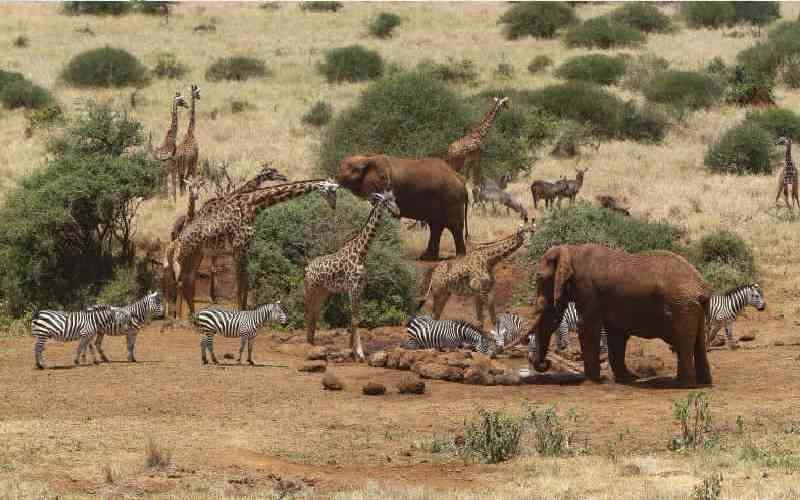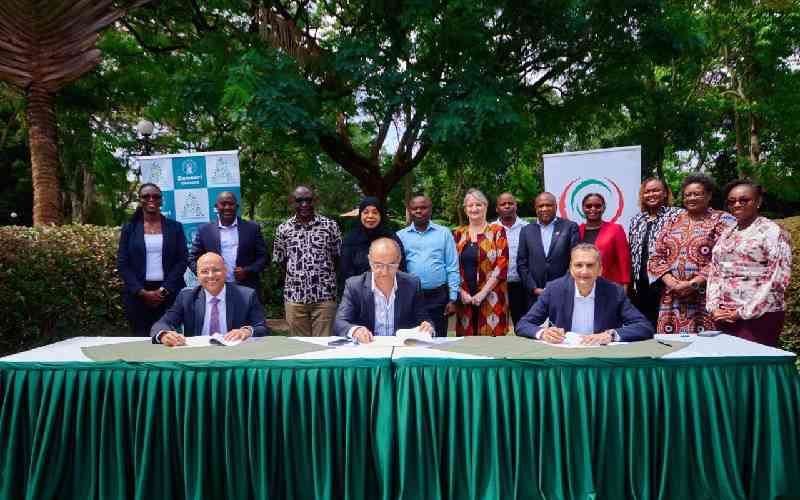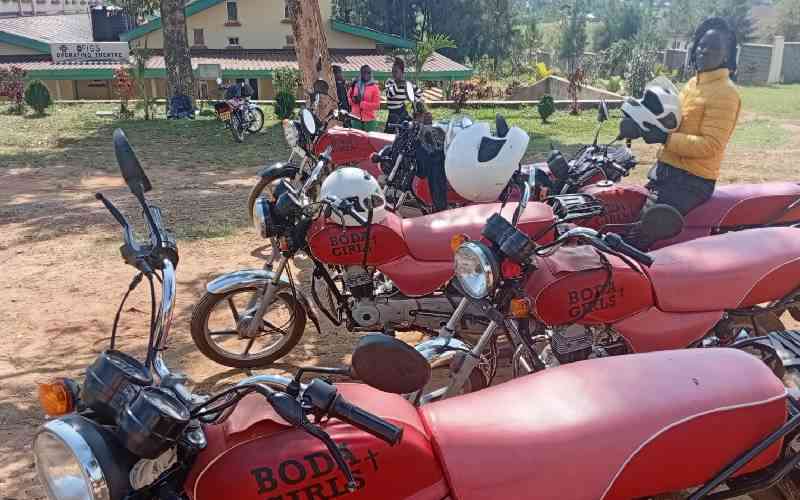
From poaching to farming and trading, Kenya’s wildlife is facing a new crisis. What once was a fight against snares, guns and bush meat has now shifted into a more organised and less visible threat: commercial wildlife farming.
This is not what the government of Kenya envisioned when they started issuing licenses for wildlife farming.
Behind tall fences and closed gates, wild animals are being bred, confined and sold under the guise of conservation.
A new investigation by World Animal Protection lays bare a system that is growing in scale and complexity, yet fuelled by cruelty and exploitation.
“Wildlife belongs in the wild. That is where the Creator placed them,” said Tennyson Williams, Regional Director of World Animal Protection Africa, during the report launch in Nairobi.
“Commercial wildlife farming is riddled with cruelty, ecological damage and illegal exploitation. Unless action is taken now, Kenya’s rich natural heritage will suffer irreversible damage.”
The report, ‘Behind Bars: Lifting the Lid off Kenya’s Cruel Wildlife Farming’ visited and investigated 55 wildlife farming facilities across the country.
Fieldwork was carried out in 2024, with investigators scouting counties in Coastal, Eastern, Western, Central and Nairobi regions.
- Dogs on the trail of South Africa's endangered tortoises
- The Last Laugh: Why Kenya's most detested carnivore deserves better
- KWS embarks on final push to save Northern White Rhinos through IVF
- Between refuge and ruin: How Dadaab's survival battle is fuelling an eco crisis
Keep Reading
Some farms were difficult to trace, hidden from search engines, and others inaccessible without logistical support.
Of the 55, some 41 were privately owned and 14 were public facilities. While public facilities were mostly focused on conservation and education, 11 of the private ones bred animals for commercial purposes.
Four offered animal-visitor interactions, raising serious welfare and health concerns.
In total, 1,477 animals were counted across six surveyed farms. Ostriches made up the largest number at 700, followed by 545 tortoises and 177 crocodiles.
Other animals included hippos, giraffes, primates such as bush babies and baboons, snakes, chameleons, birds of prey and fish.
The report paints a disturbing picture: giraffes infested with ticks, crocodiles bred for meat, snakes handled by visitors, and birds tethered to perches in the sun with no food or water.
Some tortoises had cracked shells, retracted limbs and signs of distress.
At first glance, many facilities resemble conservation centres. Visitors see animals up close, snap photographs, even feed or pet them. Behind the carefully curated experiences lies another reality.
Unlike sanctuaries, orphanages or national parks that genuinely seek to protect and rehabilitate wildlife, some farms disguise exploitation as eco-tourism.
Many had untreated wounds, parasite infestations and visible signs of malnutrition. Others displayed stereotypic behaviours such as pacing, overgrooming and self-mutilation. Veterinary care was almost absent.
One enclosure confined tortoises to a small mesh pen with only a shallow pond of water, preventing full submersion needed to keep their shells clean and hydrated.
Crocodiles were offered to visitors as entertainment, forced to fight over pieces of chicken. At some farms, customers could pay a fee to handle baby tortoises or coil snakes around their necks.
While licences are required to breed and keep wild animals, investigations found multiple breaches. Facilities licensed only for crocodiles were also keeping primates. Visitors could handle snakes, an activity with serious welfare and safety concerns.
Birds of prey were tethered with their wings pegged, some pecking at untreated wounds. In most cases, veterinary status was unknown, leaving animals vulnerable to disease and injury.
According to the report, 83 per cent of the facilities surveyed had been operating for over five years, relying on outdated practices and benefiting from weak enforcement.
Thirty-three per cent focused on tourism, while 67 per cent were breeding farms. Despite high entry fees, little revenue appeared to be invested in animal care.
“We believe tourism can continue without tourists having close interaction with animals,” Williams explained. “What looks harmless, such as feeding or posing with a wild animal, causes immense stress.”
Edith Kabesiime, Wildlife Campaign Manager at World Animal Protection, echoed this sentiment, “Wildlife farming is being sold as conservation. In truth, it is commodification. Animals are not props for entertainment.”
“The increase in wildlife farming operations raises alarming questions about the future of Kenya’s world-renowned wildlife heritage. It contradicts Kenya’s reputation as a leader in conservation,” Williams said.
Neglect remains the most common form of cruelty. The report notes instances of hoarding, physical abuse and animals being sold as breeding stock to new buyers.
Joseph Sanga of Nature Kenya described the situation as “a life of suffering for financial gain”. “When we talk of conservation, this cannot be what we mean,” he noted.
Experts say this situation is largely contributed by the existing gaps in the Wildlife Conservation and Management Act of 2013 that has remained unclear on the welfare of wildlife in the wildlife farms.
The Act is the backbone of wildlife governance. Section 18 established County Wildlife Conservation Committees (CWCC) to oversee management and ensure communities benefit. However, gaps in the law allow farming practices to thrive unchecked.
The Act permits game farming for specific species but does not detail how far farming can go or set minimum welfare standards.
There are no clear rules on enclosure size, nutrition, veterinary oversight or animal-visitor interactions. This silence has left room for commercial operations to push boundaries.
“The law allows farming but says nothing about how animals should be treated,” said Jeremiah Chirchir from the State Department of Wildlife. “That is the gap. We need regulations that define welfare, not just permissions.”
Critics also argue that Community Wildlife Committees are not fully community-driven since government officials chair them.
This undermines local ownership. “Communities are brought in by name, but decision-making is still centralised,” said Sanga.
Lucy Mwita of Kenya Wildlife Service admitted the regulatory shortcomings, “Some facilities operate legally, others exploit loopholes.
Monitoring is not easy, and penalties are weak. The law was a step forward but it has not kept pace with reality.”
This statement appears at odds with evidence from the World Animal Protection report, which uncovered animals with untreated injuries, tethered birds with open wounds and tortoises showing signs of malnutrition.
The findings suggest that inspections either missed or failed to adequately address such welfare violations
Aside from the conservation concerns, the situation raises serious public health agitations. Close confinement of wild species in poor conditions provides a breeding ground for zoonotic diseases.
The World Animal Protection report cites global data showing that 72 per cent of zoonotic diseases in humans originate from wildlife, causing an estimated 2.7 million deaths annually.
Past outbreaks provide stark warnings: Ebola linked to the consumption of wild animal meat, COVID-19 was traced to bats, monkeypox was also associated with wildlife trade, and avian influenza was connected to farmed birds.
“Kenya cannot afford to ignore these lessons,” said Dr Patrick Muinde, the Research Planning and Quality Assurance Manager at World Animal Protection.
“The risk of disease spillover from farmed wildlife to humans is not theoretical. It is real.”
Wildlife farming is not unique to Kenya. Across the world, commercial demand fuels a booming trade valued at between 200 and 300 billion US dollars annually, according to estimates by the United Nations Environment Programme (UNEP) and Interpol.
The trade spans exotic pets, traditional medicine and entertainment.
Evidence shows that farming does not reduce poaching pressures, but instead stimulates demand and enables laundering of wild-caught animals through legal facilities.
“The role of commercial wildlife farms in conservation is complex and controversial,” the report states.
“Supporters argue that by supplying the market with wildlife products, these farms can reduce pressure on wild populations. However, there is little evidence to prove this. In fact, wild-caught animals are often preferred, keeping the illegal trade alive.”
Kabesiime noted, “What appears to be sustainable use is in reality fuelling biodiversity loss. These facilities become loopholes for traffickers.”
Globally, countries such as China, Vietnam and South Africa have been flagged for large-scale wildlife farming operations involving tigers, bears, lions and reptiles.
In Africa, crocodile ranching and lion bone trade have drawn global condemnation. Kenya risks being dragged into this web.
Research also shows that East Africa is not immune. In Tanzania, an Interpol-led operation in 2024 seized nearly 20,000 live animals and led to more than 360 arrests across wildlife and forestry networks.
In another case, 116 tortoises smuggled out of Tanzania were intercepted in Bangkok and later returned under an Interpol investigation.
These incidents highlight how neighbouring states are already being used as trafficking hubs, raising concerns that Kenya could face similar risks.
Kenya itself has recorded high-profile seizures. In October 2023, an Indonesian national was arrested at Jomo Kenyatta International Airport (JKIA) carrying 38.4 kilograms of ivory worth about Sh10 million.
Earlier, authorities intercepted 5,000 queen ants packed in test tubes and syringes for export. Between January and April 2016, the Kenya Wildlife Service (KWS) Canine Unit recorded 21 seizures of wildlife trophies at JKIA, including pangolin scales and ivory jewellery.
These cases show that trafficking routes exist and are already being tested through Kenya’s ports and airports.
At the launch, government and conservation stakeholders acknowledged the challenges that Kenya faces in regulating wildlife farming.
They raised concerns about weak enforcement, noting that while some facilities operate legally, many exploit loopholes in the law.
Questions were asked about the broader conservation value of these farms and whether commodifying wildlife undermines Kenya’s global reputation.
There was also recognition that the Wildlife Conservation and Management Act has gaps, particularly in defining welfare standards and monitoring practices.
The intersection of weak laws, growing demand and regional trafficking networks paints a worrying picture.
While Kenya has made progress in tackling poaching, wildlife farming now emerges as a less visible but equally dangerous frontier.
The policy gaps have also enabled other forms of illegal exploitation. Conservationists point to the thriving wildlife meat business in parts of Kenya, which continues despite being illegal.
This underlines how policy loopholes and weak enforcement have normalised certain practices in the shadows of the law.
This is why the animal rights’ group is calling for a total ban on commercial wildlife farming in Kenya.
This includes prohibiting breeding for business, enforcing stricter regulations, increasing penalties and focusing tourism on genuine conservation.
“Kenya’s tourism thrives because visitors see animals in their natural habitats,” Kabesiime said. “That is the model we should protect, not one that puts animals behind bars.”
Dr Muinde urged urgency, “The government must act swiftly before the industry becomes unmanageable. There is a window now that can be seized to stop what is going on.”
Authorities have been provided with the names of the farms under investigation. “We have their names at our back end,” said Dr Muinde.
“In the report we have not done that, because it is not about naming and shaming. We have given the information to the State Department of Wildlife and we hope they take action.”
Tourism is both Kenya’s pride and a challenge for wildlife welfare. Overcrowding in parks, with vehicles surrounding a single lion or hyena, can cause distress.
In facilities, visitor interactions such as feeding giraffes, riding ostriches or posing with snakes may seem thrilling but leave animals traumatised.
“Tourists often do not realise the mental and physical toll on the animals,” Chirchir said. “It is time to set limits, train guides and raise awareness.”
A new bill on wildlife management has been under consideration, with experts saying it is expected to replace the current framework, which they describe as extractive in nature, riddled with gaps and weakened by corruption and lack of enforcement.
Conservationists argue that the failure to enact guiding policies after the 2013 Wildlife Act was passed has contributed directly to the rise of commercial farming and other illegal practices, including the wildlife meat trade.
Advocates are calling for a comprehensive national audit of all wildlife facilities, stronger laws, public awareness campaigns, and the end of direct animal interactions. Rehabilitation and rehoming of captive animals are also key.
“Wildlife farming fuels illegal trafficking and biodiversity loss,” said Wachira Kariuki, Director for Legal Affairs and Advocacy at the Africa Network for Animal Welfare.
“It is time for Kenya to champion ethical conservation and reject commodification.”
From poaching to farming, Kenya’s wildlife now faces new and complex threats. The Behind Bars report documents how animals endure lives of suffering for profit, raising questions about animal welfare, conservation impacts and public health risks.
Stakeholders at the launch acknowledged that gaps in law, enforcement and monitoring continue to make regulation difficult.
Kenya is confronted with a choice as debate on the future of wildlife farming intensifies: how to balance conservation, tourism and community interests while safeguarding its natural heritage.
 The Standard Group Plc is a multi-media organization with investments in media
platforms spanning newspaper print
operations, television, radio broadcasting, digital and online services. The
Standard Group is recognized as a
leading multi-media house in Kenya with a key influence in matters of national
and international interest.
The Standard Group Plc is a multi-media organization with investments in media
platforms spanning newspaper print
operations, television, radio broadcasting, digital and online services. The
Standard Group is recognized as a
leading multi-media house in Kenya with a key influence in matters of national
and international interest.











